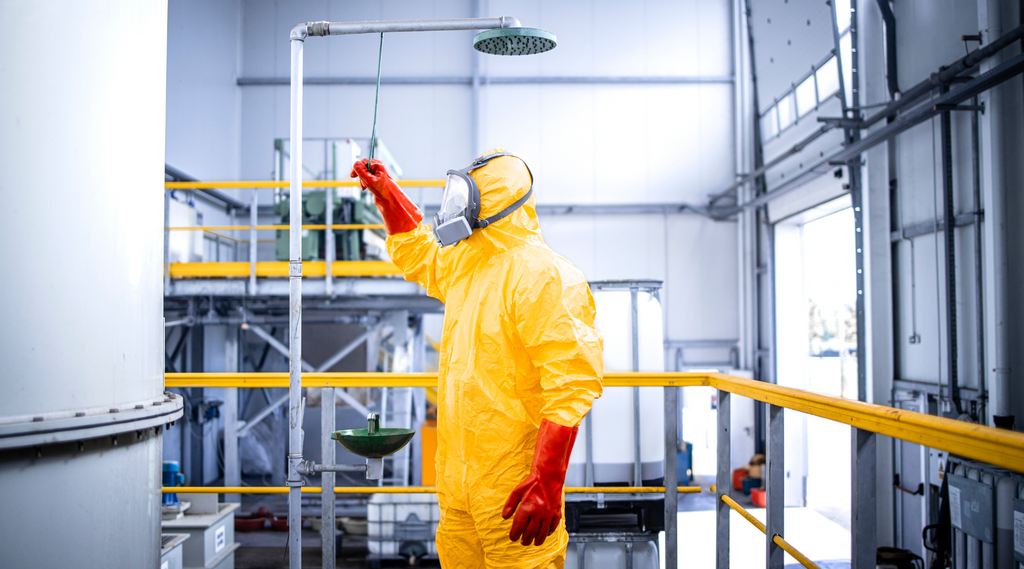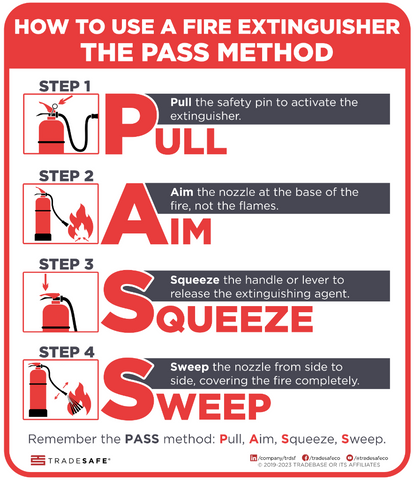
Laboratories are active environments for research and development, but they also come with inherent health and safety risks due to the materials and experiments conducted in them. It's crucial to recognize these dangers and implement robust safety measures to protect everyone working in these environments. This article highlights the importance of essential laboratory safety equipment, focusing on seven key equipment that help maintain a secure and efficient workspace.
Importance of Safety Equipment in Laboratory
Laboratory safety equipment acts as a critical barrier between individuals and potential hazards. The absence of proper safety gear can lead to severe consequences, including personal injury, legal liabilities, and even loss of research integrity. Implementing effective safety tools minimizes risks, ensuring that all personnel can focus on their scientific endeavors without fear of accidents.
A survey involving 2374 laboratory personnel revealed that nearly half (46%) reported sustaining at least one injury while working in a laboratory setting. Previous studies examining laboratory accidents have also shown that 81% of accidents occurred in teaching labs, 13% in research labs, and 2% in fabrication rooms. Further data from the Division of Chemical Health and Safety of the American Chemical Society determined that students (graduate assistants and student employees) are the most frequently injured group, comprising 40.9% of laboratory-related injuries at Iowa State University from 2001-2014.
This data underscores the importance of not only having the right lab safety equipment but also ensuring proper training and adherence to safety protocols. Strengthening safety measures and ongoing education can significantly reduce the incidence of accidents and injuries, creating a safer environment where scientific exploration can thrive without unnecessary risks.
Common Laboratory Hazards and Risks
Laboratories present various hazards that can significantly impact health and safety:
- Chemical spills and splashes: These can cause burns, poisoning, or skin irritation
- Fires and explosions: Often a risk with flammable substances, requiring immediate suppression to prevent disasters
- Inhalation of harmful fumes and vapors: Certain chemicals pose health risks when their vapors are inhaled
- Flying debris from broken glassware: Leads to eye injuries or cuts
- Cuts and punctures from sharp objects: Common with scalpels, needles, and broken glass
Must-Have Laboratory Safety Equipment List

Safety Glasses
Eye protection is vital in labs due to risks like flying debris, chemical splashes, and broken glassware. Safety glasses should meet the ANSI Z87.1 standard for adequate protection, featuring impact resistance and providing side protection. Safety eyewear with a "D" special marking indicate that the lenses have been tested and certified as resistant to dust, droplets, and splash hazards.
- D3 - Droplet and Splash Protection: The "D3" marking offers protection from droplets and splashes of liquids.
- D4 - Dust Protection: The "D4" marking is for protection against dust particles that are 5 microns or larger.
- D5 - Fine Dust Protection: Eyewear with a "D5" marking offers protection against fine dust particles that are smaller than 5 microns.
Gloves
Gloves serve as a crucial barrier against dangerous chemicals, thermal burns, and biological contaminants. Selecting the right type of glove—nitrile, latex, or vinyl—is essential based on the chemicals handled. Understanding the proper usage and when to replace gloves can prevent skin exposure and contamination.
Lab Coats
Lab coats protect against spills and splashes, providing a removable barrier between hazardous substances and personal clothing. Opt for long-sleeved, flame-retardant materials with button-down fronts to enhance protection.
Fire Extinguishers
Quick access to fire extinguishers can be life-saving in a lab. It is important to choose the right class of fire extinguishers (A, B, C, D, or K) depending on the flammable liquids handled in the lab and ensure they are regularly inspected, easily accessible, and marked using fire safety signs. Knowing how to use a fire extinguisher correctly is crucial in any laboratory setting, as quick action can prevent a small fire from escalating into a larger, uncontrollable blaze. Here’s a brief guide on how to operate a fire extinguisher effectively using the PASS technique:

- Pull: Start by pulling the pin at the top of the extinguisher. This pin prevents the handle from being accidentally pressed and discharging the fire extinguisher.
- Aim: Next, aim the nozzle, horn, or hose at the base of the fire from a safe distance. Targeting the base is critical because it helps to tackle the fire’s source, not just the flames.
- Squeeze: Then, squeeze the handle or trigger steadily. This releases the extinguishing agent.
- Sweep: Finally, sweep the nozzle from side to side while continuing to aim at the base of the fire until it appears to be out. After you think the fire is extinguished, watch the area closely as the fire could reignite; repeat the process if necessary.
A fire blanket is another critical safety tool in labs, particularly useful for smothering fires that involve clothing or small equipment. Fire blankets are made from fire-resistant materials and can be quickly deployed to extinguish small fires without the mess or damage associated with some extinguishers. They are also effective in emergency situations to wrap around a person whose clothing is on fire, helping to cut off the oxygen supply to the flames.
First Aid Kits
A well-stocked first-aid kit is vital for treating minor cuts, burns, and scrapes that may occur during lab work. First aid kits or safety storage cabinets should include bandages, antiseptic wipes, gauze, tweezers, scissors, and other basic medical supplies.
Eyewash Station
Safety showers and eye wash stations are critical for immediate decontamination, helping to flush out hazardous substances that may come into contact with the eyes. Ensure these stations are accessible, requiring no more than 10 seconds to reach, and should not have any obstacles in the path to their location. They must be clearly marked and located near areas where dangerous substances are used or stored. Several types of eye wash stations are available, each suited to different laboratory environments and needs.
- Plumbed Eyewash Station is permanently connected to a source of potable water and is designed for locations where hazardous materials are handled regularly.
- Portable Eyewash Station is ideal for areas that do not have accessible plumbing. These stations use a contained fluid and must be refilled or replaced after use.
- Drench Hose Units provide a flexible option, functioning as both an eye wash and a body rinse.
Fume Hood
Chemical fume hoods are essential pieces of laboratory safety equipment that handle volatile chemicals or substances that emit hazardous fumes. It is designed to limit exposure to toxic gases, vapors, and dust. The basic operation of a fume hood involves pulling air away from the laboratory environment and expelling it outside, maintaining a controlled airflow to prevent hazardous substances from escaping into the lab. This is achieved through a fan that draws air into the hood and then pushes it through ducts to the outside.
To operate, turn on the fan before working, adjust the sash to the recommended height for safety and efficiency, and perform all tasks within the hood, keeping materials at least six inches from the edge. After use, run the fan for a few minutes to clear residual fumes, then close the sash fully to secure the hood and conserve energy.
Laboratory Safety Equipment Usage Training

Comprehensive training programs on the correct use of laboratory safety equipment ensure that all personnel are knowledgeable about how to properly utilize safety gear like goggles, gloves, laboratory coats, and fire extinguishers. It’s not just about knowing the safety lab equipment; it's about understanding when and how to use it effectively to mitigate risks.
Equally important is raising awareness about potential hazards and safety protocols. This involves educating staff and students about the risks associated with specific chemicals and safety lab equipment, as well as the correct procedures for handling these materials safely. Training should be ongoing to accommodate new safety information and technologies, and to reinforce safety habits regularly. Additionally, simulation of emergency scenarios can prepare the lab personnel for actual incidents, ensuring that everyone knows how to react swiftly and efficiently.
Lab Safety Protocols for a Safe Environment
Established safety protocols are the backbone of a safe laboratory environment, extending beyond the use of lab safety equipment to include a variety of practices and procedures:
- Proper Storage and Handling of Chemicals: Chemicals must be stored according to their hazard classifications to prevent reactions between incompatible substances. Proper handling techniques should also be taught to minimize spills and exposures.
- Personal Hygiene Practices: Good hygiene is essential to prevent contamination and exposure to hazardous materials. This includes practices like washing hands before and after handling dangerous chemicals, not eating or drinking in the lab, and keeping personal items (like phones and bags) away from the work area.
- Housekeeping and Maintaining a Clean Work Area: Regular cleaning schedules help prevent contamination and accumulation of hazardous materials. Keeping work areas tidy reduces the risk of accidents caused by spills or clutter.
- Proper Waste Disposal Procedures: Disposing of chemical waste properly is critical to prevent environmental contamination and health hazards. This includes identifying which materials can be disposed of together, how to neutralize certain chemicals before disposal, and using designated waste disposal containers.
- Hazard Communication and Labeling Systems: Clear labeling and communication about the hazards present in the laboratory are mandatory. This includes using globally harmonized system (GHS) labels and safety data sheets (SDS) for all chemicals.
- Emergency Response Procedures: Every laboratory should have a clear plan for different types of emergencies, including fires, chemical spills, and medical emergencies. This involves access to first aid kits, knowledge of exits and spill kit locations, and a communication plan. The inclusion of a Chemical Hygiene Plan (CHP) is also crucial, as it outlines specific procedures and safety measures tailored to the hazards of the laboratory.
FAQs on Lab Safety Equipment
What are the safety equipments in a laboratory?
Common laboratory safety equipment includes safety goggles, lab coats, gloves, fire extinguishers, fume hoods, emergency eyewash and shower stations, and first aid kits.
What are the 5 PPE in the laboratory?
The five primary types of personal protective equipment (PPE) used in laboratories are safety goggles, lab coats, gloves, face shields, and respirators.
What is the OSHA standard for laboratory?
The OSHA standard for laboratories is outlined in the Laboratory Standard (29 CFR 1910.1450), commonly known as the "Occupational Exposure to Hazardous Chemicals in Laboratories." This standard mandates exposure controls, the use of PPE, and the implementation of a Chemical Hygiene Plan (CHP) to ensure worker safety in environments where hazardous chemicals are used.
Who is responsible for lab safety?
Responsibility for lab safety lies with multiple parties:
- Laboratory Managers are responsible for establishing and maintaining safety protocols.
- Chemical Hygiene Officers oversee the implementation of the Chemical Hygiene Plan.
- Principal Investigators and Supervisors ensure that their staff are trained and comply with safety procedures.
- All Laboratory Personnel are responsible for following safety protocols, using PPE, and reporting any unsafe conditions or incidents.
What are 20 laboratory safety rules?
- Wear appropriate PPE at all times.
- Know the location and proper use of safety equipment.
- Read and understand safety data sheets (SDS) for all chemicals used.
- Do not eat, drink, or apply cosmetics in the lab.
- Do not smell or taste chemicals.
- Label all chemical containers clearly.
- Store flammable liquids according to compatibility.
- Keep aisles, hallways, and exits clear of obstructions.
- Dispose of chemical waste properly.
- Keep work areas clean and tidy.
- Use fume hoods when working with volatile substances.
- Plan and conduct every experiment with appropriate safety in mind.
- Never work alone in the laboratory.
- Be aware of emergency procedures and evacuation routes.
- Report all accidents, spills, and injuries immediately.
- Avoid using glassware that is chipped or cracked.
- Handle and dispose of sharp objects carefully.
- Do not use damaged equipment.
- Ensure all equipment is properly grounded.
- Continuously update safety training and skills.
